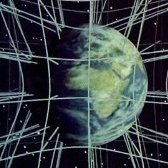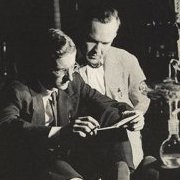Leaderboard
Popular Content
Showing content with the highest reputation on 10/15/20 in all areas
-
@koti BTW, I have advice for you Koti, and for other members for the future.. When you're quoting something found on the Internet, don't thoughtlessly copy'n'paste it, but remove any tracking code which allows uniquely identify who you are.. e.g. strip URL to the absolute minimum e.g. without query string and fragment string. Sometimes tracking code is inside of path (and translated by rewrite_engine, but it is minority, at the moment). I can tell when somebody read my e-mails sent to customers with precision to second, and how many times they opened e-mail prior replying with the all details what they used to read it etc etc.. Link https://www.sciencenews.org/article/physics-first-room-temperature-superconductor-discovery Works as good as yours...2 points
-
You are confusing different aspects here, and one issue is the way you think or define "maximum power". You have to think about what it means (or what you mean with it). Aerobic breakdown provides the most energy per metabolized molecule. It provides energy from glycolysis as well as via the respiratory chain (i.e. oxidative phosphorylation). Anaerobic glycolysis only takes the first part and misses out on the latter. Therefore aerobic pathways yield maximum power per glucose, whereas the anaerobic pathway does not. However, what the body does is ramp up glycolysis for short term energy generation and instead of further going down the oxidative phosphorylation, they miss out on that part (as oxygen becomes limited) and end up with lactate. I.e. the increase in energy is by increasing the front reaction, rather than having a more effective pathway. There is also the phosphagen system that can yield energy without oxygen, but again it is not as efficient as is used for short-term ATP generation. So in other words, for short bursts, oxygen becomes rate limiting, but as a whole provides more energy per glucose.2 points
-
Just to add my 2 cents: as a philosopher, I of course am aware of the many topics in philosophy. However, even philosophers should also be firmly rooted in practical life. And, as said, the philosophy forum is not the most busy one. If MSCs proposal would be implemented, I assume most of the subfora would stay empty, and indeed, the administrators would get the extra job to see if something is ethics or meta-ethics, social philosophy or philosophical anthropology, logic or meta-logic, cognitive philosophy or philosophy of science etc. etc. I am perfectly happy with the present categorisation, pure for practical reasons. On the other side, having a subforum in 'The Lounge' on Sculptures made of almonds is perfectly justified. 😋2 points
-
...and all I can think of is more efficient drivers for my flashlights: https://www.sciencenews.org/article/physics-first-room-temperature-superconductor-discovery?utm_source=Reddit&utm_medium=social&utm_campaign=r_science&fbclid=IwAR23F2iSASF7zy780H3PI3qVwNNM7ejoF7uWRmAza4j6FeASxnbNf7CDLJI1 point
-
Not so. I'm functionally a cyclops, and the 3D glasses they give you in the cinema do nothing for me, but I get my 3D vision from motion (moving myself) rather than from binocular vision. It doesn't work as well, but enough that I don't need to resort to groping to perceive depth.1 point
-
Superconductors, through which an electric current can pass without loss, have long been seen as offering great potential in such applications as transmission of electric power. The downside is that superconduction was initially found only at temperatures close to absolute zero. Years of experiment have led to demonstrations at substantially higher temperatures, but still well below room temperature - one of the goals of the research. Now the good news: reported in this Nature article, researchers have achieved superconduction in a carbonaceous sulphur hydride system at a temperature of 15o C. And the bad news: this occurs at pressures between 140 to 275 gigapascals. However, the researchers feel that "introduction of chemical tuning within our ternary system could enable the preservation of the properties of room-temperature superconductivity at lower pressures". The Nature article is behind a paywall, so only the abstract is accessible, but this BBC item gives a popular assessment.1 point
-
Most people aren't experts in any particular thing, and if they are then their competence is limited to a specific area. Yet we have a need to make decisions related to many subjects we do not fully understand, and in those cases we often rely upon authoritative people and organizations to guide us in that process. But how can we decide who we should trust? Governments have been malevolent and dishonest in the past, and scientists have gotten things tragically wrong. How should we as laymen decide where to place our faith? Because that's what trusting an authority ultimately is, faith.1 point
-
Normal matter clumps under the influence of gravity, but this is only because of other interactions: normal matter particles collide, loose energy and so get closer to each other. And because of the conservation of angular momentum, structures made of normal matter tend to concentrate in more or less disk-like structures (planetary systems, galaxies). Now we learn that most galaxies are supposed to be embedded in a sphere of dark matter. These are spheres, not disks, because dark matter particles, interacting through gravity only, cannot average out their angular momentum, and so do not form a disk-like structure. So far so good. But if we suppose that dark matter also came into existence during the big bang, and was more or less evenly distributed as normal matter, how did concentrations of dark matter arise? Because dark matter particles do not interact, except by their gravity, should these particles not be more or less evenly distributed through the universe, instead of being concentrated around galaxies and galaxy clusters? I would say that the influence of normal matter can play no role either, because dark matter also does not interact with normal matter, except again gravity. So one of my assumptions must be wrong. Which one? How did concentrations of dark matter arise?1 point
-
I don’t know what would help Michel. I seem to remember he’s an architect by trade (right?), so he would have been explicitly trained and experienced in thinking in Euclidean terms, since this is the kind of geometry we use to construct everyday objects. But relativistic spacetime is not Euclidean, so maybe this is where the problem lies. The geometry of Minkowski spacetime isn’t particularly abstract, it’s just different from the kind of geometry we learn at school. But when one does not make that paradigm shift away from Euclidean thinking, nothing about relativity will ever make much sense, irrespective of whether the particulars are understood or not. I don’t think so lol Relativity really isn’t that difficult to grasp, and Michel is clearly very intelligent, so I don’t think the problem is one of understanding.1 point
-
Which is something we point out now and again. If you’re going to make a suggestion, you need to take care not to add undue burden to the staff, who would prefer to spend their time here in discussion rather than moderation duties. IOW, one should avoid being cavalier with someone else’s time. “add subforums” is extra work. Without making a case for why that’s better for staff, it’s a nonstarter.1 point
-
Due to the latest information I have available the answer is yes. Off Topic and less serious: English is not my fist language but I think I prefer a bag of Nutworks rather than explaining how a nut works to nut jobs. Thanks for noticing. Just curious, this means you found the error(s) in your approach?1 point
-
Sometimes I think about removing it, but I just can't bring myself to pull the trigger.1 point
-
I don't really wish to involve myself in this discussion, but there is one point I'd like to make - from my personal experience, I found that a top-down approach works much better when learning relativity. That means you start with the general overarching principle, and then drill your way down and see how those apply to individual scenarios. Getting yourself lost in complicated scenarios seems not the right way to go. But maybe that's just me1 point
-
We can make a picture with the forces later today. Your statement implies that a ball would need a push to start rolling downhill. Expertise not needed. Here is an example. Place the nut at the top end (or any way along the thread except for at the bottom end). You claim that a frictionless nut will not slide down but remain at rest until torque is applied.1 point
-
After seeing Kanye as a choice on my US presidential ballot today, I decided to celebrate the best thing he ever did: But then I heard this and it’s. So. Much. Better1 point
-
If I had to, I would say a conservative Liberal. Not a liberal Conservative, like a lot of American Democrats. Nor a conservative Dumb-ass, like a lot of American Republicans. ( notice I said a lot, not all )1 point
-
Thank you Doc for ignoring the off topic stuff1 point
-
Trust begins with yourself and your own judgement. Indeed, as newborns, we acquire our measure of trust in ourselves and others by experiences that inform trustworthiness. For me that experience began with mathematics and how it always provides an unwavering basis for logical thinking. Specifically, for me, a very basic algebraic equation, (If a=b and b=c, then a=c) has been my unwavering basis in whatever I chose to study. Rational, trustworthy thoughts and perspectives should have a basis in logical thinking and real evidence. Trust also involves a capacity to consider the logic and evidence that opposing views offer. Experts may only be knowledgeable to an end supporting a biased perspective of which they might not be aware, which is why opposing views must be part of a rigorous vetting process. Before I trust, even my own perspective, I weigh all arguments and evidence against that trust. Whatever and whomever we chose to trust should have a basis in our own investigation of all the available evidence for and against them--in my opinion.1 point
-
It's irrelevant to my point. Science relies on theory, not proof, and not truth. Theory changes as our knowledge changes, and always presents us with our current best explanations. When people think they've found truth, they stop looking, and that's not science. Phlogiston wasn't truth, was it? Aren't you glad it was just a theory that was overturned? Can't you understand this?1 point
-
As you go through notes/textbooks write down key points, ideally in a heirarchical bullet point format. Write in your own words, but retaining technical terms. If you know what is on it envisage typical questions you might be asked, write them down and answer them.1 point
-
You are probably correct. I'll make sure to ask for a mathematician to conduct any surgery I may require in the future. He is sure to be more trustworthy than some over-qualified surgeon.1 point
-
The guide bars prevent this, but in any event, this is baloney. A rotating object can have a linear velocity. In some cases, such as this one, the rotational speed is related to the linear speed.1 point
-
Swansont rightly draws our attention back to the original question posed by Victheromanian. This question was: Why aren't the fields generated by inert permanent magnets considered as energy. Isn't the answer this : that our modern science cannot admit the possibility of energy coming from nothing. Always, we think, energy has be the result of some physical change in the state of matter. The matter may change its state by travelling, thus gaining kinetic energy. Or by undergoing physical changes to its internal atomic structure - by nuclear fission or fusion. Thus releasing "atomic" energy. In the form of nuclear reactors or bombs. In both cases, the matter must underdo some change of state, in order to produce energy. So, the concept of a permanent magnet producing energy without moving, or undergoing fission or fusion, is deeply hostile to modern science. And is therefore resisted. Such resistance is not new in the history of Science. You'll recall that in the 17th Century, Newton's theory of Gravitational attraction was strongly attacked, especially by French philosophers, as it didn't seem reasonable. It didn't seem reasonable to Einstein either, which is why he devised Relativity Theory to replace it.1 point
-
The first regular expression gets at least one match in any input string, since the whole pattern is optional due to the placement of the star "*". It has one capturing group. The second regular expression requires the string " U " (Capital U surrounded by spaces) to occur once while the two patterns "bba" and "aab" are optional This regular expression has two capturing groups. Why do you think they are the same? It is easier to guide if you give some hint about your reasoning. Example: First regular expression matches for instance the whole string: "bba U aabbba U aab" (The second regular expression matches the initial substring "bba U aab") The second regular expression matches for instance the whole string: "bbabbabba U aabaabaab"1 point
-
It is not a real paradox since the Theory (SR in this case) predicts nothing different than what happens in reality. It is only when the situation is assessed by a naive person who does not know the theory well that inconsistencies might first appear. If I am figuring out something and I get an inconsistency like that, my instinct is like that of a scientist: I assume I made a mistake somewhere, and do not assume the theory is wrong. The wiki article expresses this: "Therefore, at first sight, it might appear that the thread will not break during acceleration." This already implies somebody who isn't very familiar with SR, since anybody who knows it well knows that a rigid object (one that retains its proper length at all times) undergoes different magnitudes of proper acceleration along its length. The two spaceships undergo identical proper acceleration, therefore the assembly of the two connected ships does not constitute a rigid object and will not retain its proper length. So it is no surprise that the string breaks. It is similar to the twins 'paradox', which seems to always want to use twins because it pushes an intuitive button in humans that twins are always the same age. But this naively makes the assumption that the twins have similar acceleration histories. Once this 'rule' is found to not be a valid rule, the paradox resting on the rule vanishes. A true paradox will falsify a theory. If a theory resting on a set of premises predicts that X is true and that X is not true, that is a true paradox, and it is a general indication that at least one of the premises leading to the paradox is false. In the case of Bell's spaceships, all observers agree that the string should break given what they're doing, so there's no paradox.1 point
-
1 point
-
Mathematicians are good authorities because they can prove their theorems. As they have been able to from Classical Euclidean times, to the present. But that's not the same with modern physics. It seems to be losing touch with objective truth, and relying on "Authority figures" such as the hallowed Stephen Hawking. I don't trust him, I want to know whether his theorems can be proved.-1 points
-
They aren’t inert, and the fields possess energy. Photons, for example, have energy, and are not matter. The fields have a constant energy, so they do not “produce” energy. It does not take a source of energy to sustain the field of a permanent magnet, because the energy in the field doesn’t “go” anywhere. Conservation of energy is on pretty solid ground. What modern science resists is nonsense explanations like yours. Science prefers sound theories with experimental verification.-1 points














